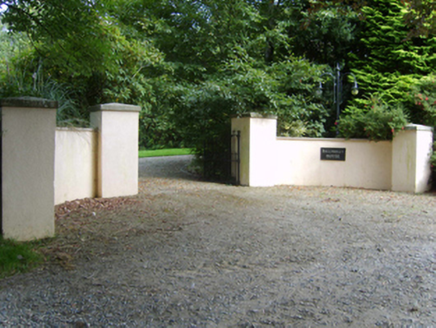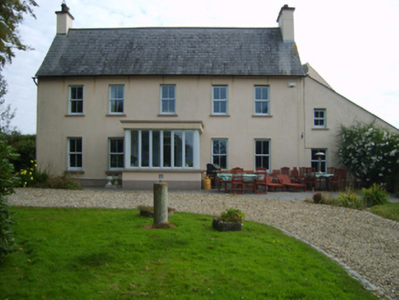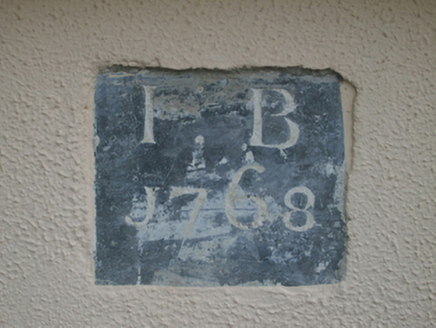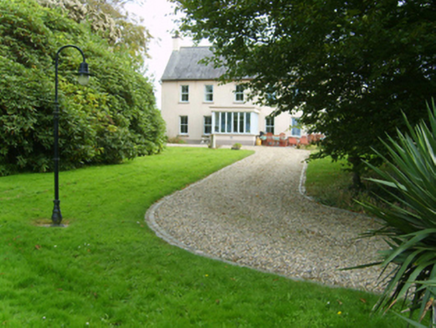Survey Data
Reg No
15704280
Rating
Regional
Categories of Special Interest
Architectural, Artistic, Historical, Social
Original Use
Farm house
In Use As
Farm house
Date
1765 - 1770
Coordinates
305591, 115471
Date Recorded
13/09/2007
Date Updated
--/--/--
Description
Detached five-bay two-storey farmhouse with dormer attic, dated 1768; extant 1811, on a T-shaped plan centred on single-bay single-storey flat-roofed projecting glazed porch to ground floor. "Improved", pre-1903, producing present composition. Occupied, 1911. Pitched slate roof with clay ridge tiles terminating in rendered chimney stacks having concrete capping supporting terracotta or yellow terracotta octagonal pots, and cast-iron rainwater goods on rendered eaves retaining cast-iron downpipes. Rendered battered walls bellcast over rendered plinth with rendered "bas-relief" strips to corners. Square-headed central door opening into farmhouse with concealed dressings framing timber door having overlight. Square-headed window openings with cut-granite sills, and concealed dressings framing two-over-two sash windows without horns having part exposed sash boxes. Set in landscaped grounds with rendered piers to perimeter having cut-granite shallow pyramidal capping supporting wrought iron double gates.
Appraisal
A farmhouse erected by James Berry ("I:B/1768") representing an important component of the mid eighteenth-century domestic built heritage of south County Wexford with the architectural value of the composition, one allegedly repurposing a house dating back to the early seventeenth century (Rowe and Scallan 2004, 146), suggested by such attributes as the compact rectilinear plan form centred on a featureless doorcase, albeit one largely concealed by a later porch; the very slight diminishing in scale of the openings on each floor producing a feint graduated visual impression; and the high pitched roofline. Having been well maintained, the elementary form and massing survive intact together with quantities of the original or sympathetically replicated fabric, both to the exterior and to the interior, thus upholding the character or integrity of the composition. Furthermore, bellcote-topped outbuildings (extant 1903) continue to contribute positively to the group and setting values of a self-contained ensemble having subsequent connections with the Sealy family including John Lett Sealy (d. 1876), 'Gentleman and Farmer sometimes called Jack Sealy late of Ballykelly County Wexford' (Calendars of Wills and Administrations 1877, 669); and the Jeffares family including James Jeffares (----), 'Farmer' (NA 1911).







